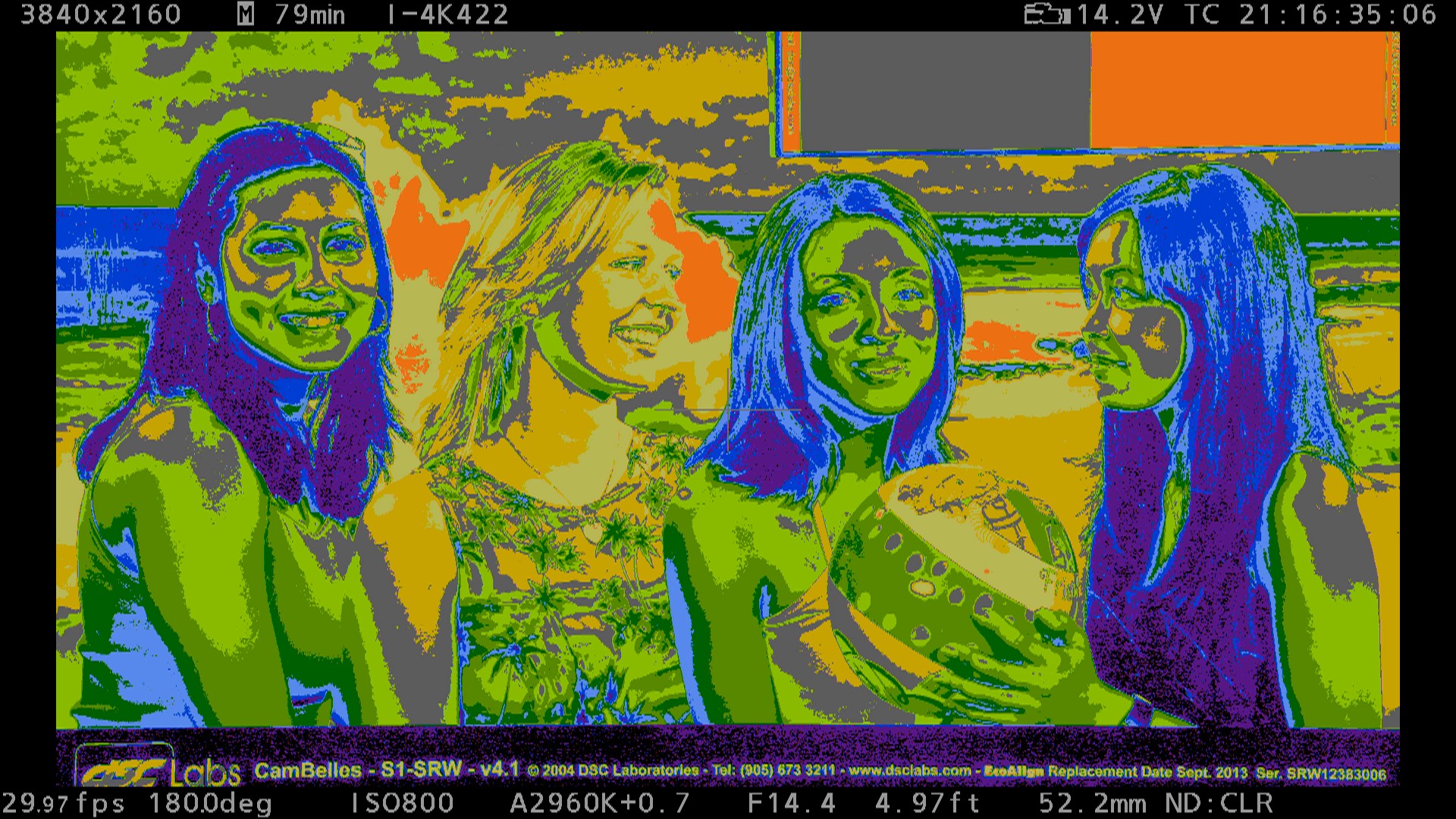
NEWARK, N.J.—Panasonic has released EL Zone, a new exposure map tool, as part of its latest VariCam firmware update.
“Unlike false color methods that have limited steps and are IRE percent-based, EL Zone is an intuitive stop-based system that relates one-to-one with lens F-Stops and light meters,” said Mike Bergeron, senior category owner, Production Solutions, at Panasonic. “The tool is easy to use, and the color codes are arranged to be easy to remember.”
Firmware version 9.0’s EL Zone exposure map tool was created by cinematographer Ed Lachman, ASC, whose credits include “Erin Brockovich,” “Far From Heaven” and “Carol,” Panasonic said. It offers 15 delineated steps to help map the VariCam’s full exposure range.
In EL Zone, 18% gray shows up as gray. Complete overexposure shows up as white with no detail remaining and full underexposure shows up as black with no detail remaining. With the tool, setting skin tones for light or dark skin is in +/- ½ to 1 Stop increments above and below 18% gray. Assigning EL Zone to a camera user button allows the exposure map tool to be turn on or off, the company said.
El Zone is now available for the VariCam LT and VariCam 35 4K HDR cinema cameras. EL Zone can be used in the various color modes, including: V-Log, V-709 and V-Look1 and V-Look2 (V-Look 1 and 2 are available for VariCam LT only). With the free upgrade, cinematographers have more flexibility to correct problematic shots, match shots to others and achieve highly stylized or cinematic looks in post-production, Panasonic said.
Other new firmware features include added anamorphic de-squeeze aspect ratios 1.8x and 1.5x and an in-camera custom aspect ratio frame marker generator that dials in just about any aspect ratio. There are also improved prefixed fixed frame markers that are easier to use, the company said.
More information is available on the company’s website.
The professional video industry's #1 source for news, trends and product and tech information. Sign up below.
Phil Kurz is a contributing editor to TV Tech. He has written about TV and video technology for more than 30 years and served as editor of three leading industry magazines. He earned a Bachelor of Journalism and a Master’s Degree in Journalism from the University of Missouri-Columbia School of Journalism.

